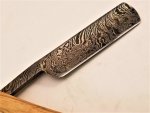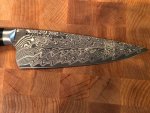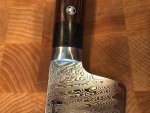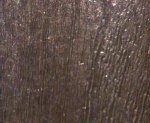Oh boy. Yes, they hold an edge. Longer than another steel, maybe - depends on hardness. Harder to sharpen, maybe - depends on hardness.
Damascus steel as we understand it today, which means pattern-welded Damascus, not Wootz, can be beautiful. Honestly, after the looks, any other properties depend on Rockwell hardness. Essentially, the harder the steel, the longer it keeps an edge. Practically, the harder a steel, the more difficult it is to get to that edge. I love my Damascus blades, but I don't see myself buying more. They are pretty, and I can hone them to what is as close to perfect as makes no difference to me. But as you know, the last custom razor I ordered was made from O1 tool steel, which I regard as the best of all compromises. Pretty much any steel, including pattern-welded damascus can be hardened and then tempered down to a desired HRC number (yes, the Damascus will be a sort of composite of the two steels). I realised I loved old Sheffield razors, as they were soft enough to take an exquisite edge very easily, and they don't keep it for very long, but that's good too, as I like honing!
If I were considering buying a custom damascus today, I'd want to be convinced to buy it by its looks, but would need to know I could hone it before spending the money. If it always disappointed me in the shave, no matter how gorgeous it was, it would be a failure. I've bought too many razors, and of all of those, far too many were damascus razors if the shave is the only criterion that matters. Once you let aesthetics in the door, anything goes. Many of my razors have taken me a long time to figure out how best to hone, and I'm relieved to say I can hone all but the Deformed Letter-Opener Of Gabor. Were they all O1 steel tempered down to HRC 61-63, I'd have an easier life, but they wouldn't look so good in the display cases.
I suspect from your recent question in the SOTD, and with this question, you are considering investing in a Damascus blade. If you want to know in advance how a custom blade from a particular maker will hone up, you can only go by the experience of other buyers, assuming the techniques used haven't changed. Nine Zowadas in, I know you can't go wrong there, but I guess there is a long wait now. The old time Livi Damasteel razors were sui generis, but are lovable even if not capable of the Zowada edge. I'm sure there are many forgers out there who can make a great blade, but you'll be finding out for yourself. There is NO magic in Damascus. None. Nothing. They can look good, and can be as good as any other razor. But no magic.




